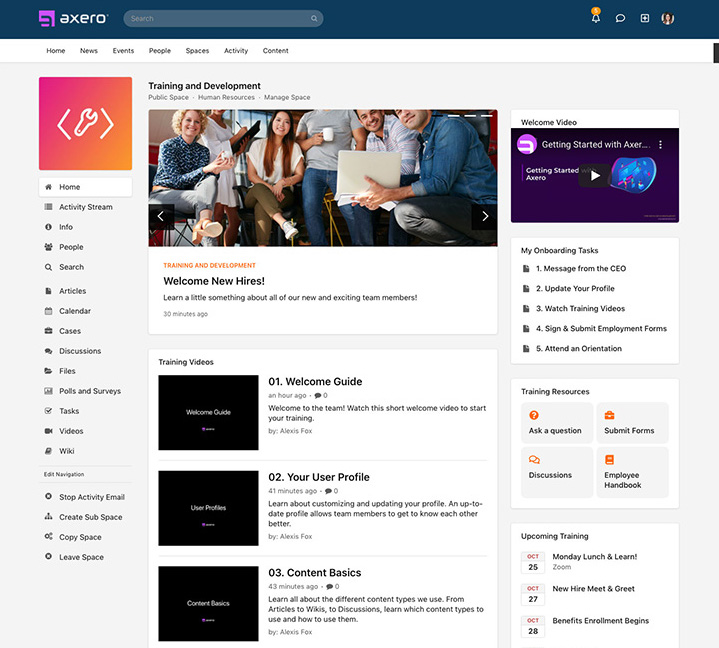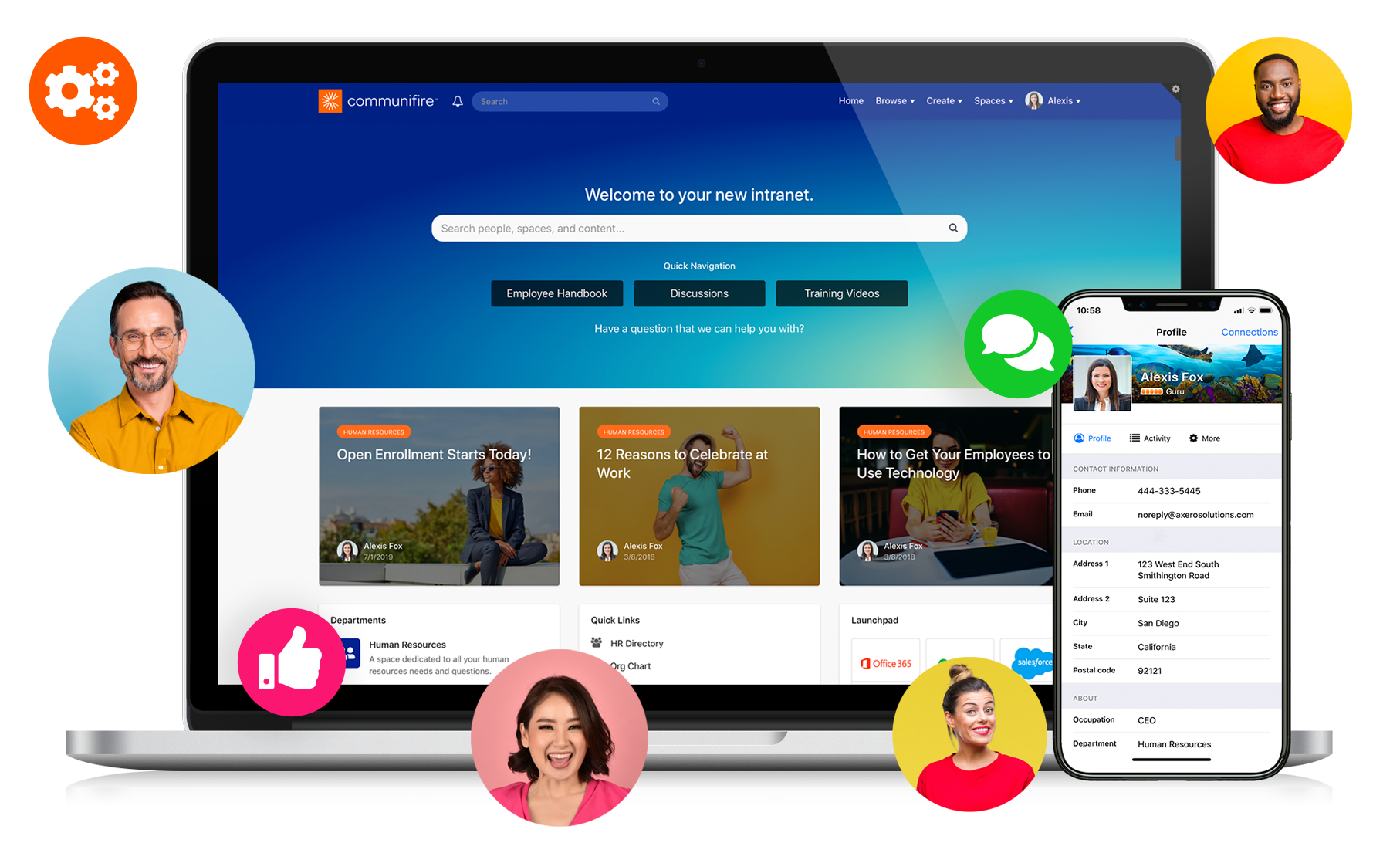Work-life harmony is one of the U.S. Surgeon General’s five essentials for workplace mental health and well-being. Each essential is grounded in two human needs, and for work-life harmony, you guessed it, they are autonomy and flexibility.
Imagine working in an environment where you have little to no influence or input on decisions that affect your work, where you can only go for lunch at 12, or where you feel like you are being watched every minute of the day. No wonder workers just wilt away in these conditions.
Without autonomy at work, employees feel disempowered and disconnected from what they do. The consequences are clear: decreased productivity, declined performance, and ultimately, employees choosing to leave the organization for better opportunities.
Now more than ever, workers are demanding greater control over where, when, and how they work. This includes everything from flexible working hours to respect for time off and personal boundaries. It all feeds into the overall employee experience you set for your workplace. Let’s look into what autonomy at work is, how it benefits individuals and organizations, and how we can foster it effectively.
What is autonomy at work?
First things first, let’s make sure we’re on the same about what autonomy at work really means. In the Surgeon General’s Framework for Workplace Mental Health and Well-Being, autonomy, within the context of work, is defined as:

It is quite clear that autonomy in the workplace concerns 3 key areas:
1. Autonomy over when we work
Besides flexible hours and hybrid work options, employees should be able to log off after work and use their PTO without having their boundaries crossed (that meeting can surely wait until they come back!).
It’s also important to acknowledge that people have different peak performance times. Some might like starting really early to focus better, while others might have caregiving duties and need a later start. When people can choose to work during their most productive times, rather than conforming to a strict 9-5 schedule, doesn’t it already sound much better for their overall performance? Maybe we should consider core hours or even condensed hours? This is also what a truly inclusive workplace looks like, so it’s time to really walk the talk.
For employees who work shifts, unpredictable, short-notice schedules not only make it difficult for some workers to secure childcare or arrange transportation at odd hours, but they can also lead to burnout, poor sleep, and isolation from relationships inside and outside of work. If shift or frontline workers are expected to submit their PTO requests far in advance, it is only fair that they receive their work schedules well in advance too!
2. Autonomy over where we work
Allowing employees to work from where they wish, within reason, can significantly enhance their productivity and overall well-being. For example, some employees may find that they are more productive in a quiet home office, away from the click-clack of keyboards and the distractions of a busy office. Others might thrive in a dynamic coworking space that facilitates networking opportunities.
What’s more, many of us are now more acclimated to working from home or in remote work settings as a result of the pandemic. This period, if anything, demonstrated that productivity is not necessarily tied to a specific location but to an employee’s ability to manage their time and environment effectively. Hence, companies need to think twice about mandating a return to the office (RTO) as they might face backlash, such as Grindr having lost almost half of their employees to the two-day RTO mandate.
At the same time, this freedom should of course come with clear guidelines and communication. It won’t make sense if a sales rep working across the tri-state area suddenly decides to fly out to Europe and work from there without prior discussion and approval from their company.
At the end of the day, this is not just about convenience and preferences; it’s about how we start to recognize that productivity and well-being are deeply personal, and a one-size-fits-all approach to where we work doesn’t work for everyone.
3. Autonomy over how we work
Not everyone approaches tasks in the same way. Some employees might prefer a detailed, step-by-step process, while others thrive in a more agile, iterative environment. Either way, employees should have a say in how they work. Just as you cannot force a fish to fly, you cannot expect employees to perform their best under a workflow that minimizes their strengths and might even maximize their stress.
You can easily tell where autonomy is lacking: managers often micromanage every step of the process without setting clear, achievable goals. This can lead to frustration and reduced motivation among employees, as they feel restricted and unable to contribute their own ideas. That said, Employees should be given the freedom to innovate, solve problems, and determine how they work best.
Equally important is considering diverse needs and preferences to ensure practices are inclusive and equitable. This might include accommodating different communication styles, providing resources for neurodiverse employees, and ensuring accessibility for all team members. For example, instead of giving only verbal requests to employees with ADHD, reinforce them with written instructions and a clear timeline.
Why is autonomy at work important?
So why should I be giving employees autonomy, you may ask?
Well, apart from autonomy being one of the five most intrinsic drivers of threats and rewards in the brain, the following are far-reaching benefits of autonomy in the workplace.
1. Boosts productivity, creativity, and innovation
When employees have the freedom to make their own decisions and approach tasks in their own way, they are likely to perform more efficiently.
Without having to follow rigid instructions, employees are encouraged to think outside the box and explore creative approaches to their work. Creativity and creative thinking are not exclusive to creative roles. With autonomy, employees in any position can find innovative ways to improve processes, solve problems, and better their workflows. As a result, you also improve and boost employee productivity—in some cases, tremendously.
Remember, innovation doesn’t flourish in environments with stringent rules.
2. Increases employee engagement

When you can work autonomously, it’s far easier to “own” what you do, feel excited about it, and seek ways to improve. And this is what employee engagement is all about.
On the flip side, if your initiatives are often shot down, concerns ignored, or voices unheard, it’s understandable that you might just show up for the sake of it and eventually start looking for better opportunities elsewhere. Where there is no freedom to innovate, there is rarely room to grow.
3. Increases job satisfaction and motivation
When employees have the autonomy to work in a way that suits them best, they are likely to feel more fulfilled, which leads to higher job satisfaction. This, in turn, boosts their motivation to perform well and contribute positively to the organization.
4. Fosters a sense of ownership and accountability
Naturally, employees with job autonomy feel a greater sense of ownership over their work. This sense of ownership leads to higher accountability, as employees are directly responsible for the outcomes of their decisions and actions.
5. Promotes skill development
In an autonomous environment, employees have the freedom to make their own decisions and tackle new challenges. This not only allows them to enhance their existing skills but also encourages them to explore and acquire new ones, knowing they have the autonomy to do so.
This can be particularly beneficial for those seeking lateral or horizontal career growth, as it provides opportunities to broaden their expertise and take on diverse roles, rather than solely focusing on climbing the traditional career ladder.
6. Develops leadership qualities
Autonomy serves as a training ground for future leaders. When employees are given the freedom to work autonomously, they naturally develop a sense of accountability and ownership over their tasks and projects.
Thanks to autonomy in the workplace, employees learn to:
- manage their time effectively
- set priorities
- take responsibility for their outcomes
This sense of ownership not only boosts their confidence but also enhances their ability to lead and inspire others. As they grow more comfortable with making decisions and handling challenges on their own, they become better equipped to take on higher responsibilities within the organization.
7. Improves employee retention
Some people believe that they need to assert control to make others stay, but in reality, people are more likely to stay when they are given freedom. You don’t want people to stay because they have nowhere else to go. Instead, it’s best when they actively and voluntarily choose to stay.
When employees feel trusted, respected, and empowered to make their own decisions, they develop a much stronger sense of belonging and motivation. This sense of autonomy reduces chances of high employee turnover and promotes a positive environment where people feel valued and are, therefore, more inclined to stay and contribute meaningfully.
8. Builds a culture of trust
This again echoes what we mentioned earlier: nobody wants to feel like they are constantly being monitored or micromanaged.
Granting autonomy to employees is a powerful way to show that you trust their abilities and judgment. Where trust exists, you not only empower your team but also create a foundation for open communication, innovation, and mutual respect. When employees sense this trust, they are more likely to reciprocate. This directly leads to a stronger and more positive workplace culture.
9. Improves overall well-being
Above all else, autonomy at work also means autonomy outside of work. Not only does it play a significant role in how an employee performs in the workplace, but it also influences their overall quality of life.
When employees have the freedom to make decisions and control their work, they can better manage their personal life. This leads to improved well-being and satisfaction—both professionally and personally.
Case Study: Spotify
Spotify is renowned among consumers as the world’s leading music streaming app, but for professionals, the company stands out for their culture of growth and autonomy.
In their manifesto, Spotify wrote:
By believing in our talented band members, giving them the support and autonomy they need to create. (And lots of cold brew.)
Spotify employees are empowered to make their own informed decisions and given the freedom to fail as it’s “an inevitable outcome when pursuing innovation.” And this is only possible as managers at Spotify are encouraged to act more as coaches who provide support, transparent communication, clear expectations, and honest feedback.
Spotify decentralizes decision-making, meaning that teams—or what they call Squads—can innovate, experiment, pivot, and act in the best interests of the company without needing approval from higher-ups.
To support and coordinate the work of the Squads, Spotify uses a system of Tribes, Chapters, and Guilds:
- Tribes are larger units that group squads working on related projects to ensure alignment and collaboration across the broader scope of their work.
- Chapters are focused on specific disciplines (such as engineering or design) and provide support and development for individuals in those roles across different squads.
- Guilds are informal communities of interest that span the entire organization to foster knowledge sharing and collaboration on common interests.
Spotify’s autonomous culture is a key differentiator, making it not only a leader in music streaming but also a model of modern, innovative workplace practices. This culture attracts top talent and drives the company’s ongoing success and growth.
For employers: How to encourage autonomy in the workplace
Autonomy in the workplace can only work when both employers and employees join hands. No matter how revolutionary this whole idea of autonomy is, it will never work out if managers fail to trust and empower their employees. That said, train managers to:
- Set clear, measurable goals for your employees. When your crews understand what is expected of them, they can better determine how to achieve those goals independently.
- Provide help and support. Ensure your employees have the necessary tools, resources, and training to perform their tasks autonomously. This includes access to technology, information, and skill development opportunities.
- Trust your employees. Allow employees to make decisions within their scope of work. Avoid micromanaging and give them the freedom to approach tasks in their own way.
- Create psychological safety. This is where employees feel comfortable taking initiative and trying new approaches. Support them in their efforts, even if they make mistakes, as this encourages learning and growth.
- Empower employees to make decisions. Involve them in planning and problem-solving processes. This builds confidence and reinforces their sense of ownership over their work.
- Reward autonomy. Acknowledge and reward employees who successfully manage their tasks independently. Positive reinforcement can motivate others to seek out and embrace autonomy.
- Provide constructive feedback regularly. Help employees understand their performance and areas for improvement. This guidance can help them become more confident and autonomous.
- Form teams with diverse skill sets. This way, employees can collaborate and learn from each other. This can foster a sense of independence as they contribute their unique expertise to achieve common goals, just like at Spotify!
For employees: How to ask for more autonomy in the workplace
If autonomy is yet to exist in your workplace, why not take the initiative and ask for it? (Bam! And just like that, you demonstrate the ability to take charge and initiate! 💅) Here are some tips if you plan to ask for autonomy at work.
- Assess your readiness. Do you have the necessary skills, knowledge, and confidence to handle increased responsibility? Self-assess and identify areas where you may need further development. It’s okay if you don’t have it all—nobody does. What you can definitely do is ask for the support that you need in order to thrive!
- Create a proposal. Outline specific tasks or projects where you believe you can take on more responsibility. Detail how you plan to approach these tasks and the benefits of increased autonomy for both you and the organization.
- Show, don’t tell! Present evidence of your past successes and how they demonstrate your ability to work independently. Use specific examples to show your track record of reliability and competence.
- Do a trial run. Suggest a trial period where you can demonstrate your ability to handle more autonomy. This can provide a low-risk way for your supervisor to assess your capability and build trust.
- Be proactive. Take proactive steps to demonstrate your readiness for more autonomy. Volunteer for projects, suggest improvements, and take ownership of your work without waiting for explicit instructions.
- Maintain open and transparent communication. Keep your supervisors/managers informed of your progress, challenges, and successes. This builds trust and demonstrates your accountability.
- Be patient and persistent. Understand that granting more autonomy may take time and multiple discussions. Your patience will reflect your dedication to achieving greater independence in your role.
Power to the people!
Autonomy in the workplace doesn’t happen overnight. It takes a lot of mutual trust, empowerment, and genuine commitment to foster autonomy. But apart from that essential foundation, one of the key elements is the right set of tools!
The right tools facilitate communication, collaboration, and resource management, which creates an environment where employees feel empowered to work independently. These tools streamline processes, provide access to essential information, and enable seamless interaction among team members, regardless of location or work style.
Axero is an excellent example of a platform that supports autonomy in the workplace. Here’s why:
- Centralized communication: Axero offers a unified communication platform where employees can share updates, collaborate on projects, and stay informed about company news. This reduces misunderstandings and keeps everyone aligned.
- Resource accessibility: Axero’s knowledge management ensures that all necessary resources, such as company policies, project documents, and training materials, are easily accessible. This cuts down the need for constant managerial intervention, allowing employees to find the information they need on their own.
- Collaboration spaces: Axero provides dedicated spaces for teams and projects. Employees can share ideas, give feedback, and work together efficiently, regardless of location.
With Axero, organizations can create a supportive environment that encourages autonomy, boosts productivity, and fosters a culture of trust and innovation. See how we can help you build an autonomous workplace where employees can thrive!


















 info@axerosolutions.com
info@axerosolutions.com 1-855-AXERO-55
1-855-AXERO-55


